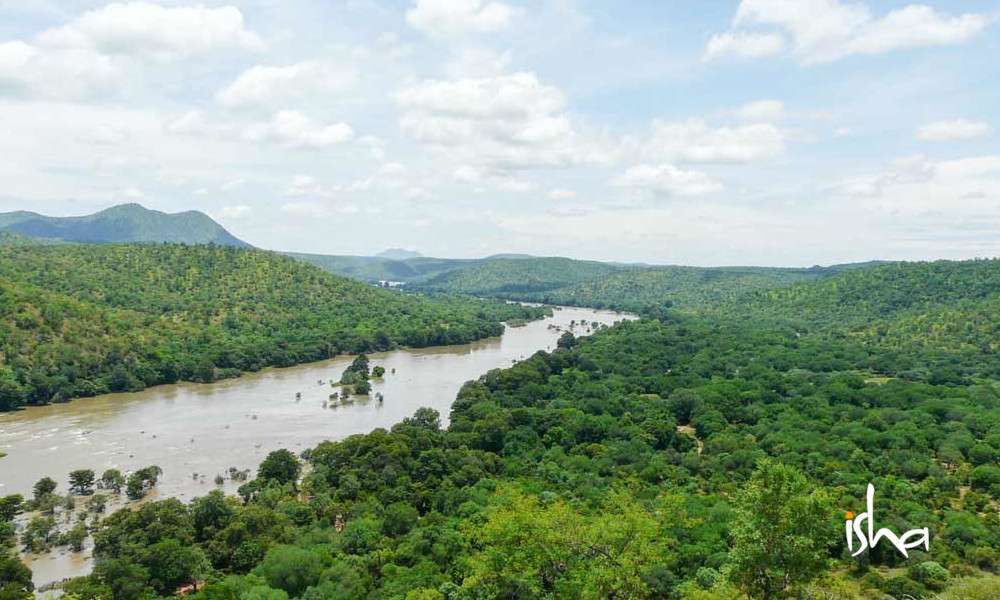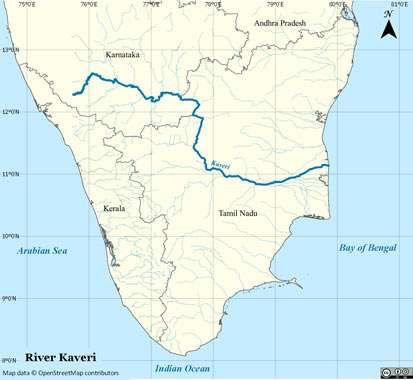A Sustainable Solution for the Cauvery Dispute
Sadhguru looks at the fundamental issues behind the Cauvery dispute and what can be done to address the problems in a sustainable way.

Sadhguru looks at the fundamental issues behind the Cauvery dispute between the states of Tamil Nadu and Karnataka, and what can be done to address the problems in a sustainable way.
Sadhguru: Water is a resource that has to be managed. We have not really paid attention to this in the last few decades. There are subsidies that are supposed to promote water conservation, but we have not really looked at how we can practice agriculture in a way that conserves water. In Tamil Nadu for instance, we are still largely flood irrigating, which is the cruelest way of using water. It is not good either for the land or for the crop itself. This practice was used in the past, but there are more efficient ways to practice agriculture today. If you put so much water in one place, the soil gets leached and all the bio-activity in the soil is reduced. The plant may look green, but it suffers because of this in many ways. If we change this, Tamil Nadu and Karnataka can manage their water situation.

Apart from this, we need to pay more attention to the Cauvery itself. The Cauvery is maybe forty percent of what it was fifty years ago. It does not touch the ocean two to three months in a year. It is not just the Cauvery but almost all our rivers that are going through this. This is a disaster unfolding in this country.
I have rafted down the Cauvery from Bhagamandala to the Krishna Raja Sagara dam and the Brindavan Gardens in Karnataka. That is over 160 kilometers. It took me around thirteen days on four truck tubes and twelve bamboos. I know this terrain very well. One thing that really stands out is that, in this entire 160 kilometers, it is only in the first 30 to 35 kilometers that there is any forest vegetation. After that there is just agriculture. How will a river flow with this? We don’t have ice-fed rivers in southern India. These are forest-fed rivers. Unless there is forest, there will be no river after some time. Our idea of a catchment area is that 35-kilometer valley. No, catchment should be all along the way.
Subscribe
People think because of water there are trees. No, because of trees there is water. All along the river, for at least one kilometer on either side, wherever the land belongs to the government, we must do afforestation immediately. Wherever it belongs to a local farmer, the government must move from agriculture to horticulture. If you have to move a farmer from agriculture to horticulture, you have to subsidize the first five years for him till horticulture crops begin to yield. And once it comes to yield, you must incentivize private sector to set up allied industry to absorb these hundreds of kilometers of horticultural products.
If you show the farmer the economics of this move, that by planting trees and having horticultural crops he will earn more than he can by plowing the land, he will naturally take to it. If you ensure this on either side for a minimum of a kilometer – if we can do more than a kilometer it will be great – in fifteen years’ time, the Cauvery will have at least ten to twenty percent more water flowing.
Towards making this happen, we are preparing a policy recommendation to offer to the government. And we are organizing the Rally for Rivers campaign where from September 3 to October 2, I will personally drive from Kanyakumari to Himalayas, to create awareness in the country that our rivers are dying. I am covering 16 states with major events along the way. Several Chief Ministers and Governors have confirmed their participation. At Delhi, we will present the policy recommendation to the government.
The very word “India” comes from the river Indus. We are a river civilization. We have grown on the river banks. Today, all our rivers are in danger. Instead of fighting against each other, we have to look at how to revive these rivers. Otherwise, in a few years we won’t be drinking from bottles, we will be bathing from bottles. Half the nation is already in a position where they don’t start their day with a bath because there is no water. In a few years, we will be in a place where we can only bathe once in ten days. The legacy we are leaving our children is such that no matter what you have, you will not be able to live well – unless nature does some serious surgical correction. The choice we have is to consciously correct this or let nature do it. If nature does it, it will do it in a very cruel way.
For thousands of years, these rivers have embraced and nourished us. A time has come when we have to embrace and nourish our rivers.
Editor's Note: Visit RallyForRivers.org for Sadhguru’s city-stop schedule and how you can participate and get involved in this nationwide campaign.


